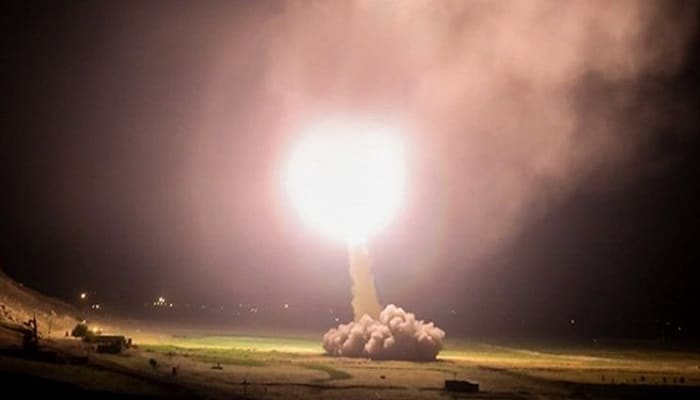PNN – The assassination of the hero of the fight against terrorism, under the pretext of countering terrorism and passivity and retreating in front of Iran’s missile response, showed a different image of America in front of the eyes of the world.
“After the Second World War, there has been no record of a shot being fired against the United States and a country taking responsibility for it.” These are the statements of the commander of the Air Force of the Islamic Revolutionary Guard Corps, Sardar Hajizadeh, in describing the details of the operation of “Martyr Soleimani” with the holy code “Yazhra (PBUH)” that destroyed the American army airbase in Iraq known as Ain al-Asad by firing dozens of ground-to-ground missiles. The operation that was carried out at 1:20 am on the 18th of January 2018 in retaliation for the cowardly assassination of Lieutenant General Haj Qassem Soleimani and his associates. Although the American authorities and the media and western circles tried to manage the public opinion about it by gradually informing about the loss of lives, finances and infrastructure, but in practice it forced the American president and the authorities of this country to back down.
America’s action in martyring General Soleimani, who was considered a national figure due to his role in the fight against terrorism and the expansion of Iran’s power in West Asia, recorded the 13th of December 2018 as an unforgettable day of America’s hostility against Iran in the historical memory of our country, and requests brought hard revenge; A revenge that was always emphasized in the statements of Iranian officials, and for fear of which the United States had put all its forces in the Middle East region on alert and at the highest level of alert.
After the American action in the assassination of General Soleimani, world authorities and media predicted Iran’s early revenge and expressed concern about the escalation of tensions as a result of America’s crimes.
The current president of the United States, Joe Biden, who was a candidate for the 2020 presidential election of this country, criticized Trump’s order and said, “The government’s statement says that the purpose of this action is to prevent future attacks by Iran, but this action will definitely have the opposite effect.”
Read more:
The School of Resistance is the legacy of the martyr Sardar.
A shot at the heart of American terrorism in the region
The commander of the IRGC Aerospace Force, in explaining the details of the attack on Ain al-Asad and the selection of this base, said: “Al-Taji and Ain al-Assad base in Iraq, Shahid Mawafaq base in Jordan and Ali al-Salem base in Kuwait were involved in the assassination of martyr Soleimani and their associates, who were identified in the first hours after the assassination. We chose the Ain al-Asad base, which was the farthest and most equipped American base in Iraq, but also in the Middle East, and we targeted it with 13 missiles of the Fatih-313 and Qiyam types, all of which hit the target. And despite the fact that the Americans had a large number of planes in flight, not a single shot was fired at the Iranian missiles and they could not fight back.”
He added, “The purpose of Iran’s operation was not to kill anyone, and in fact, it was to hit the American war machine, the control center of the American command and to hit their major drone and helicopter units.”
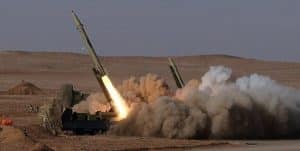
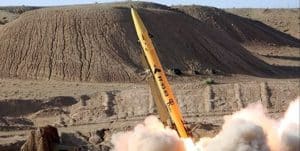
Trump’s confusion and contradictions and the Pentagon’s trickle-down information
In the first reaction to Iran’s missile attack on Ain al-Assad, Donald Trump claimed in a Twitter message, “There is nothing to worry about and everything is fine!” But the anxiety and worry in the faces of the generals who accompanied Trump in his first speech after this attack and in his own cut words. In his statements, despite denying the reality and trying to downplay the attack, in a clear retreat from his previous military threats against Iran, he claimed that “America’s arms are open to peace” and was content with announcing the decision to impose more sanctions.
American analyst Bill Palmer said about Trump’s state of mind in this speech, “He seemed half-dead during the speech at best. He slurred his words and seemed to be short of breath. He pronounced the words badly.”
After Trump’s speech, CNN’s international reporter Frederick Politgen said: “With this missile attack, the Iranians showed that they have the ability to respond to America… The Iranians also showed that they have developed very advanced weapons that can be used to target targets outside the country.”


A week after the IRGC missile attack on the Ain al-Assad base, the Pentagon admitted that 11 American soldiers suffered a “mild concussion”. Two weeks later that night, Trump was forced to confess, but in an attempt to downplay the brain damage, he likened it to a “headache.” He said that “mild brain damage is not a very important event compared to the amputation of soldiers’ arms and legs or their death, and for this reason, he refused to retaliate against this attack!”
Although the Pentagon refused to provide statistics in the first days and weeks, it was finally said that the number of injured in the attack increased to 110 people and 69 people were awarded the Purple Heart, which the United States awards to the seriously wounded in war.
The Americans also tried to insinuate that they were aware of the air attack based on the warnings and the full alertness of the forces prevented them from being killed. On the other hand, the western media tried to incite feelings in Iraq against Iran’s military response by pretending that as a result of the attacks, Iraqis stationed at the Ain al-Asad base were targeted; A claim that the Iraqi army denied.
These secrets and contradictions even raised the voice of American officials; US Senator Chris Murphy responded by saying that Trump is deceiving the public opinion of the American people.
The Americans also refused to release pictures from inside the base, despite claims that the damage caused by these attacks was insignificant. But subsequent reports, published exclusively by media outlets such as CNN and Reuters, made it clear that the intensity of the explosions was effective despite the shelter of the American forces. CNN narrated and depicted stories of the fear and terror of the American forces from Iran’s missile attack after a few days when they were allowed to enter this base.
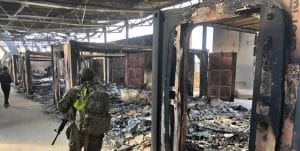
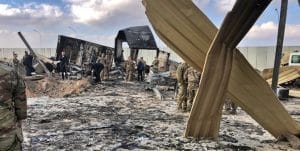

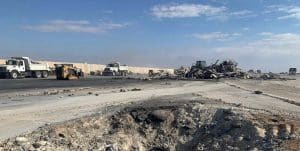
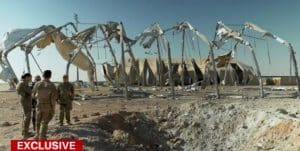

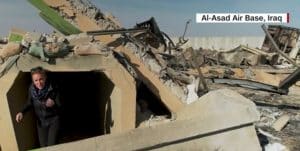
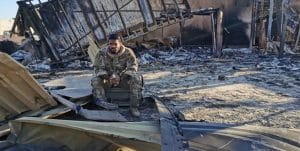
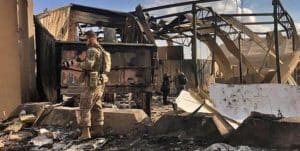
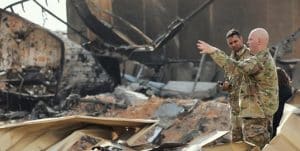
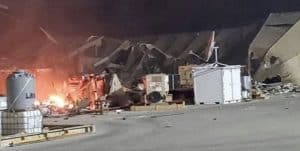
“There were about seven explosions where we were sheltering and it was extremely scary,” US Army Lt. Col. Stacey Coleman told CNN about the night of the attack on the Ain al-Assad base.
Another soldier presents at Ain al-Asad base, Alan Johnson, told the Washington Post that he had trouble concentrating since a missile hit 18 meters away from his shelter in Ain al-Asad.
The reaction of experts and analysts to Iran’s missile attack
Analyzing Iran’s response, former US military intelligence officer Scott Ritter wrote in a note to Rashatoudi, “Trump has already promised massive retaliation if Iran attacks US facilities or personnel. While he was surrounded by members of the national security team, he had to withdraw from this threat because he knew very well that if he were to attack Iran, Iran’s response would be devastating for America and its regional allies.
American expert on military affairs, Vipin Narang, also wrote in an analysis that the satellite images of the effects of Iran’s attacks on the Ain al-Assad base show that the accuracy of Iran’s missiles has increased significantly, and the effects of this missile attack show that the monopole of accurate missile attacks is out of the hands of the United States.
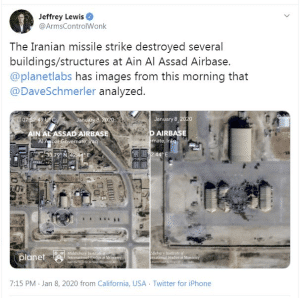
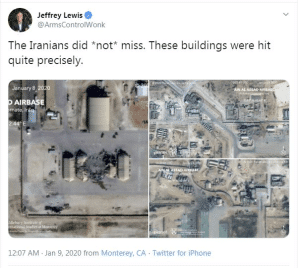
Qais Qureshi, an expert on Middle East issues, said about the IRGC’s missile attack on Ain al-Asad and the collapse of America’s hegemony, “In Ain al-Asad, the accuracy of Iranian missiles played a big role. According to the commander of Centcom, “Iran’s message was a very accurate message”. It was the first time since World War II, and there was no similar example, that a government officially attacked an American military base and officially announced that I carried out this attack.
The continuation of fear of American killers after the martyrdom of Sardar Soleimani
Four years after the assassination of Martyr Soleimani, the fear of revenge is still with the American officials involved in this crime and has forced the Biden government to spend huge money on their protection. The then US Secretary of State Mike Pompeo has admitted in a part of his book that he is constantly afraid of Iran’s revenge.
He, who was first the head of the US Central Intelligence Agency (CIA) and then the foreign minister of this country in Donald Trump’s administration, has repeatedly expressed concern about his and Donald Trump’s security and asked Joe Biden’s administration to protect them. Referring to the fear of Iran’s revenge for the martyrdom of General Soleimani on American soil, he has admitted that he no longer has a normal life and cannot even go to the store without protection and security forces.

In March 2022, the Associated Press reported that the US government spends two million dollars a month for the 24-hour security of these two former officials.

